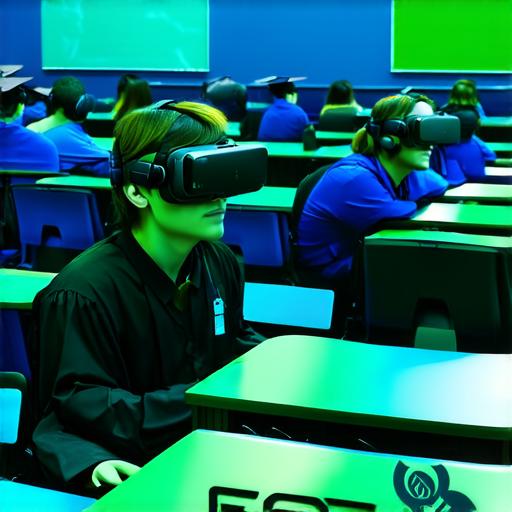Virtual reality (VR) is transforming the way we interact and experience digital content across multiple industries. In education, VR has the potential to revolutionize how students learn by creating immersive environments that feel authentic.
Virtual Reality in Education: An Overview
At its core, virtual reality is a technology that simulates a digital environment that feels like the real world. It uses sensors and other devices to track user movements, allowing them to interact with virtual objects and environments in a way that feels realistic.
VR has several potential applications in education, including:
-
Virtual Field Trips: With VR, students can visit places they might not otherwise have access to, such as the top of Mount Everest or the depths of the ocean. These experiences can be highly engaging and provide a unique perspective on the world.
-
Virtual Simulations: In some cases, VR can be used to simulate real-world scenarios in a safe and controlled environment. For example, medical students can practice surgeries in a virtual operating room, while aviation students can practice flying in a virtual cockpit.
-
Interactive Learning: VR can also create interactive learning experiences that are more engaging and memorable than traditional lectures or textbooks. By placing students in a virtual environment, teachers can create hands-on activities and simulations that help students learn in a fun and interactive way.
-
Language Learning: Virtual reality can also be used to enhance language learning by creating immersive environments that simulate real-world situations where students might use the language they’re studying. For example, a student studying Spanish could practice ordering food at a virtual restaurant in Mexico City.
Real-Life Examples of Virtual Reality in Education
There are many examples of how virtual reality is being used to enhance learning experiences in education. Here are a few:
-
The University of Maryland’s iSchool has developed a VR course called “The Future of Learning,” which uses virtual reality to explore the potential of technology in education. Students in this course can take virtual field trips, participate in interactive simulations, and practice using virtual learning tools.
-
In 2018, Google launched an initiative called Expeditions AR, which allows students to take virtual field trips using their smartphones or tablets. This app uses augmented reality (AR) technology to superimpose digital content onto the real world, creating an immersive learning experience that can be used in any classroom.
-
The University of British Columbia has developed a VR course called “Anatomy and Physiology in 3D,” which allows students to explore the human body in a virtual environment. By using VR, students can see and interact with the various systems and organs of the human body in a way that’s not possible with traditional textbooks or cadavers.
-
The Virtual Reality Society of Hong Kong has developed a program called “VR in Education,” which provides training and resources for educators who want to incorporate virtual reality into their classrooms. This program includes workshops, webinars, and other resources that help teachers learn how to use VR effectively in the classroom.

Virtual Reality in the Classroom: Benefits and Challenges
The use of virtual reality in education has several benefits. For one, it can create a more engaging and immersive learning experience than traditional teaching methods. Students are able to interact with digital content in a way that feels real, which can make learning more memorable and enjoyable. VR can also provide students with hands-on experiences that might not be possible otherwise.
However, there are also challenges associated with the use of virtual reality in education. One challenge is the cost of equipment. VR systems and headsets can be expensive, which can limit their availability to schools with limited budgets. Additionally, some students may experience motion sickness or other adverse effects when using VR technology. It’s important for educators to consider these challenges and develop strategies to address them when incorporating VR into the classroom.
The Future of Virtual Reality in Education
As technology continues to advance, virtual reality is likely to play an increasingly important role in shaping the future of education. With its ability to create immersive environments that feel authentic, VR has the potential to revolutionize how students learn and engage with digital content. As more schools and universities incorporate VR into their classrooms, we can expect to see even more innovative uses of this technology in education.
